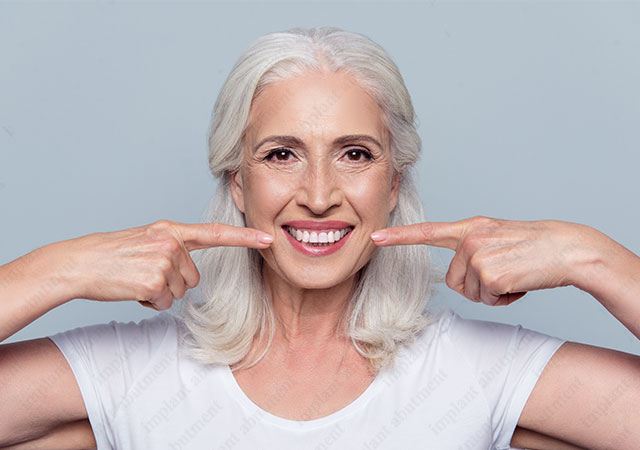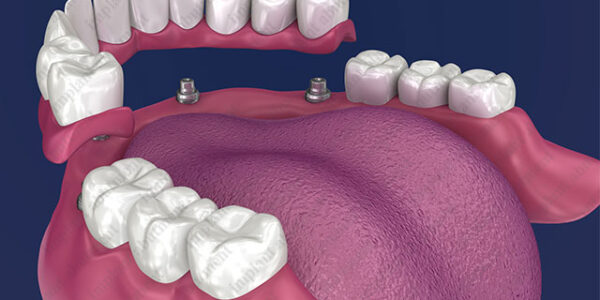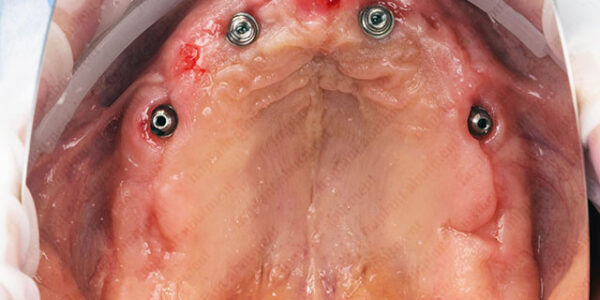The implant-retained overdenture system
Implant-retained overdentures have exponentially grown in popularity in recent years for partial and full mouth rehabilitation. The benefits of implant-retained systems outweigh those of removable dentures with regard to quality of life, systemic health and psychological benefits of the patient, and have thus become a standard for full-arch restorations. That said, the procedure of implant-retained full-arch restoration is considered one of the most challenging to perform, and choosing the right prosthetic components is paramount to a successful final restoration.
Proper choice of method and components
The challenge of the procedure is not only performing it, but also selecting the appropriate method and components to carry out the restoration. The principal methods available for full-mouth restoration are fixed complete overdentures, metal-ceramic restorations, and implant overdentures. Overdenture system components that need to be selected are the implant, overdenture abutment and prosthetic component. The selection of the method and component of the restoration is based on a number of clinical and nonclinical factors, some of which include functionality, esthetic result, patient preference, cost and long-term care / maintenance. That said, many patients choose to go with implant-retained overdentures because of the many advantages unique to this system.
Implant-retained overdentures: The cream of the crop
So what makes implant-retained overdentures superior to fixed complete overdentures and metal-ceramic restorations? The implant-retained system is based on a foundation of implants placed along the arch. Abutments are then seated over the implants and the overdenture is finally attached to the abutments. This system provides a strong retention, stability and support in the mouth that is less rigid than fixed dentures. Mandibular arch restorations reap particular benefit from these advantages, as these edentulous ridges can resorb four times faster than those of the maxillary arch. Overdentures placed on the maxillary arch often have assistance from remaining roots in bone preservation of the upper jaw.
The abutment’s critical role in the overdenture system
Denture systems retained by multiple implants positioned along the patient’s maxillary and mandibular arches have long been used to treat edentulous patients, and both traditional dentures and overdentures have been considered effective long-term solutions. Overdentures, even more so, are the preferred treatment option of many dental health professionals, and as technology develops with the overdenture abutment, it is seen by many as the most reliable option for treating the entire range of edentulous scenarios.
In other words, proper implant overdenture restoration leads to long-term success of the prosthetic system, and it is the overdenture abutment within this system that has provided numerous possibilities for restoration. With their range of angulations, collar heights, positions and fittings, overdenture implant abutments give dental professionals the freedom to choose the right geometric characteristics of the abutment to accommodate most edentulous patients, even those with challenging anatomical features or less than ideal bone volume that may have otherwise precluded the placement of implants.
Overdenture abutment types
Today’s market offers a variety of overdenture abutment types. Let’s take a look at a several of the leading types that are most widely used by dental professionals:
The classic ball-type abutment
The classic ball attachment overdenture abutment is a veteran of overdenture systems. It is an extracoronal superstructure that facilitates the attachment of full or partial overdentures to implants along the patient’s arch. The ball abutment is the more cost-effective choice for overdenture abutments and in some instances can more successfully prevent bone resorption than other overdenture abutment types. Over the long-term however, the ball overdenture abutment requires more maintenance than its predecessor, the LOCATOR®, especially due to the need for occasional replacement of the system’s o-rings. This disadvantage has caused the classic ball attachment to be phased out in many dental offices.
The LOCATOR® abutment
Zest Anchor®’s introduction of its LOCATOR® overdenture abutment enhanced the implant-retained overdenture system’s simplicity, predictability and affordability. This relatively simple abutment is recognized for its effective and simple design based on its low profile, simple pick-up technique, dual retention, and easy maintenance over the long-term. The most notable feature of the LOCATOR® abutment is its self-correcting alignment mechanism, which significantly reduces wear and tear on the components of the overdenture system and therefore contributes to the long-term stability of the restoration. While the LOCATOR® is an excellent solution for straight-forward implant procedures, patients with excessively angulated implants will require another abutment, as the stud-style LOCATOR® abutment in these angulated situations can be difficult to insert and remove.
The OT Equator abutment
One of the most recent arrivals to the market is the OT Equator attachment by Rhein83, featuring the lowest vertical height and smallest diameter of overdenture abutments. This least overall displacement provides dental professionals with a wider range of possibilities for the functional and esthetic design of the restoration, with ease of use also increased. Rhein83’s OT Equator attachment is also an ideal candidate for use in restorations treating low vertical profiles and those requiring varying specific levels of retention.
Final thoughts
The implant-retained overdenture system has led many edentulous patients to regain their quality of life. Many of us take for granted the endless amount of uses that our teeth serve, from eating to smiling, laughing to talking. Without our teeth, we not only are unable to perform many necessary activities with our mouths, but dental ridges undergo residual bone resorption, which can also alter facial height and appearance. Through the use of overdenture systems, patients are able to regain control of the daily activities their teeth are required for and maintain a crucial aspect of functionality, quality of life, confidence and happiness.





